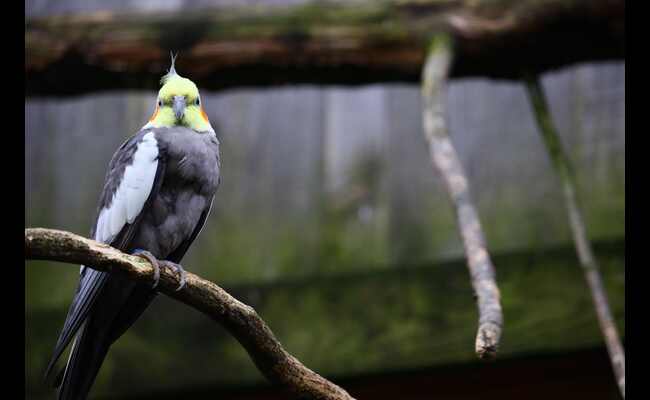Cockatiel Parrot 2023 Best Info With Details is our today’s topic. This small parrot, native to Australia, is a beloved companion bird. While it may not mimic human speech as well as some of its relatives, its beauty and lively personality make it a cherished pet. Moreover, its affordability makes it an accessible choice for bird enthusiasts. Let’s explore some intriguing facts about this delightful bird.
Cockatiel Parrot 2023 Best Info With Details

Cockatiel Scientific Classification |
Cockatiel Locations |
|
|
Kingdom
|
Animalia | Oceania |
|
Phylum
|
Chordata | |
|
Class
|
Aves | |
|
Order
|
Psittaciformes | |
|
Family
|
Cacatuidae | |
|
Genus
|
Nymphicus | |
|
Scientific Name
|
Nymphicus hollandicus | |
Cockatiel Facts |
Cockatiel Physical Characteristics |
||||
| Prey | Terrestrial insects | Predators | Raptors | Color | Grey, Yellow, White, Orange |
| Fun Fact | They have crests that rise or fall depending on their emotions | Diet | Herbivore | Skin Type | Feathers |
| Estimated Population Size | Undetermined, but conservation status is the most minor concern | Type | Bird | Top Speed | 43 mph |
| Biggest Threat | Birds of prey | Common Name | Cockatiel | Lifespan | As long as 35 years, average between 15 and 25 or longer in captivity |
| Most Distinctive Feature | Its cheek patches | Number Of Species | 1 | Weight | 3.17 ounces |
| Other Name(s) | Weiro bird, quarrion | Location | Australia | Length | 9.84 to 13.8 inches |
| Wingspan | 11.8 to 13.7 inches | Average Clutch Size | 5 | ||
| Incubation Period | 17 to 23 days | Nesting Location | Tree cavities | ||
| Litter Size | Five | Age of Molting | Three to five weeks | ||
| Habitat | Scrub, bush, wetlands | ||||
Four Fascinating Facts:
- Previously considered a type of parakeet.
- The smallest among cockatoos.
- Possesses a uniquely long tail, reaching the length of its body.
- It sports distinctive orange patches beneath its eyes, known as “cheddar cheeks.”
Don’t Miss:
Origins And Evolution:
These parrots call Australia’s wetlands, scrublands, and bushlands home. Discovered in 1770, they share many traits with their larger cockatoo relatives. In the wild, they form sizable flocks. During the 1900s, these parrots gained popularity as pets.
Scientific Insights:
Cockatoos’ common ancestor dates back approximately 27.9 million years. Their plumage, body size, wing shape, and bill morphology vary considerably. Birds evolved from theropod dinosaurs over millions of years, resulting in their distinctive small, feathered, winged body plan.
Varieties Of Cockatiels:
There are numerous mutations of cockatiels, including Lutino, Pied, Cinnamon, and Albino, each boasting unique characteristics and colorations.
Habitats And Nesting:
Weiro birds are primarily found near freshwater sources in Australia’s inland areas, preferring grasslands, shrublands, and savannas. They are also commonly spotted in urban areas, perching on electrical wires. In the wild, they nest in tree cavities, usually at least 6.5 feet above the ground, often selecting dead eucalyptus trees.
Scientific Name:
The cockatiel’s scientific name, Nymphicus hollandicus, was chosen by the German ornithologist Johann Georg Wagler, who admired their beauty akin to Greek nymphs. “Hollandicus” is derived from Latin, referencing New Holland, the former name for Australia.
Appearance And Behavior:
These parrots are slender birds with crests, known for their gray plumage, white wing patches, and distinctive “cheddar cheeks.” Their tail feathers fan out in flight, and their range serves as an indicator of their mood. They are social creatures, often found in large flocks, though they may flee if they sense danger.
Migration Patterns And Diet:
Depending on their location, some cockatiels are nomadic, while others engage in seasonal migration. Their diet primarily consists of seeds, with a preference for acacia shrub seeds. They also consume insects, berries, and fruit.
Reproduction And Lifespan:
These parrots are monogamous, often forming pairs at a young age. Breeding typically occurs with the arrival of spring rains. The female lays an average of five eggs incubated for 17 to 23 days. Chicks leave the nest around one month old and mature at different ages.
FAQs (Frequently Ask Questions)
How Much Is A Cockatiel?
The price ranges from $80 to $250, varying based on color mutations.
What Can Cockatiel Eat?
These Parrots thrive on pellets, mixed seeds, leafy greens, and fresh fruit.
How Do I Tame A Cockatiel?
Use gentleness and patience, gradually introducing treats and your hand for bonding.
Where Do I Buy A Cockatiel?
They can be bought from professional breeders, pet stores or adopted from shelters.
Can A Cockatiel Talk?
While not big talkers, they can mimic tunes and whistles.
Are Cockatiels Good Pets For Beginners?
They are considered good pets for beginners due to their easy care and quiet nature.
What Is The Lifespan Of A Cockatiel?
In the wild, they live between 10 and 14 years but can live over 20 or even 30 years in captivity.
Conclusion:
The cockatiel, cherished for its charm and generous nature, is popular among bird enthusiasts. With its rich history, diverse mutations, and captivating behavior, this small parrot continues to capture the hearts of pet owners worldwide. As a beloved companion, this parrot offers beauty and personality, making it an excellent addition to any household. I hope you enjoy reading our article Cockatiel Parrot 2023 Best Info With Details.